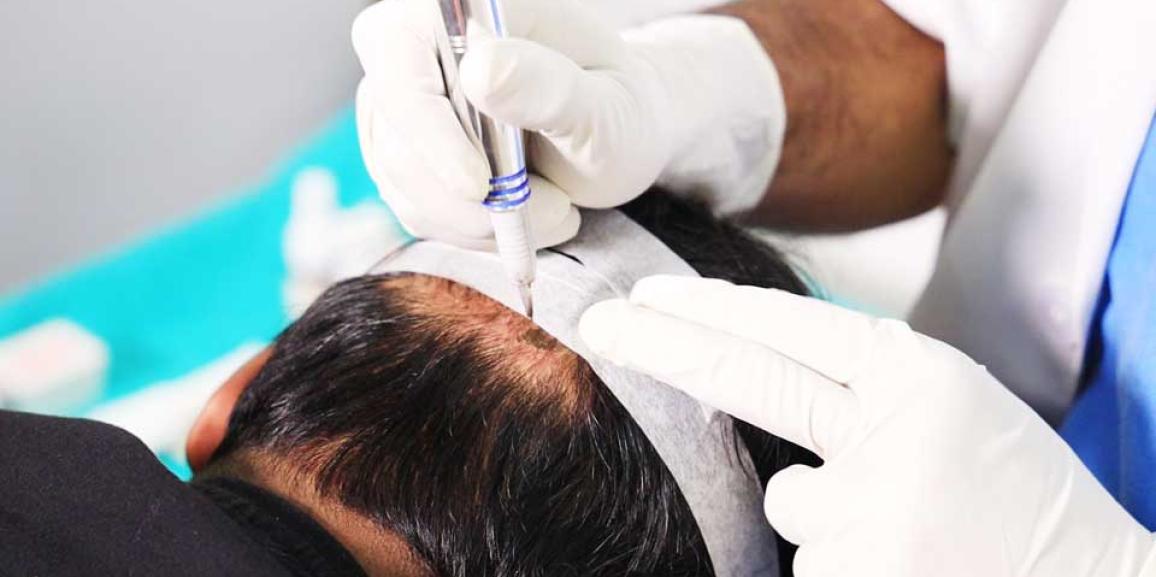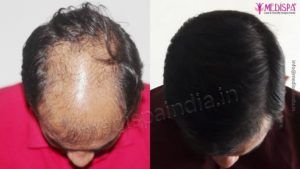
Men lose hair more frequently than women, although both genders find it upsetting. These days, more people are experiencing hair loss since our environment and way of life both encourage it.
Although it was previously believed that hair transplants were solely successful in men, this is not the case. Females often choose this surgery less often than males do for a variety of reasons, some of which we will cover in the next portion of this article.
One of the top centres for hair transplant in India, Medispa Clinic provides all services in accordance with international standards. The hair transplant cost in India is incredibly reasonable, yet we still provide top-notch service for that low price. We have the most skilled and experienced personnel in India who are committed to giving our patients the finest care possible. One of the most well-known and accomplished hair transplant surgeons, Dr. Suneet Soni is the creator of the Medispa hair transplant clinic and has successfully completed more than 10000 procedures. His astonishing surgical prowess and vast creative vision have made him a popular choice among both foreign and domestic patients.
Male and female pattern baldness
Pattern baldness, which is a hereditary disease, is also known as androgenic alopecia. Genetic dysfunction leads to oversensitive hair follicles with DHT hormone receptors. The DHT hormone has an effect on hair follicles that are DHT sensitive, which leads to hair thinning, shrinking, and finally hair loss. Pattern baldness affects the hairs from the vertex and frontal aspect, which are DHT-sensitive regions of the scalp.
The only areas of the scalp that are unaffected are the back and sides of the head, which are composed of DHT-resistant hair follicles.
Receding hairlines, the creation of temporal triangles, and bald patches on the vertex regions are characteristics of male pattern baldness. These patches eventually converge to form a sizable bald spot, leaving just a band of hair around the sides and back of the head.
The most prevalent baldness pattern in females is central thinning, which widens the partition but does not typically show baldness. Women seldom go bald, yet the majority of them have thinning hair.
Hair transplant
Hair transplant is an outpatient surgical procedure which involves harvesting or extraction of hair follicles from the donor area which are then transplanted at the desirable bald area.
Earlier hair transplant was rumoured to be just for males but it is not true. This procedure does not discriminate between the genders and even females can undergo hair transplant. Actually pattern of hair loss in females possess usually hair thinning and not baldness which makes less females opt for hair transplant.
Hair transplant techniques
There are two current methods for doing hair transplants: FUT and FUE.
By taking a strip from the donor region, which is subsequently sliced to extract individual hair grafts, the FUT hair transplant process is carried out. The recipient location is subsequently treated with these hair transplants. Up to 3500 hair grafts can be effectively harvested using this method.
Using a punch instrument, the FUE hair transplant process removes each individual hair graft from the donor region. The recipient region is subsequently treated with these transplanted harvested follicular units. Up to 2000–2500 hair transplants might be effectively harvested using this method.
How male and female hair transplant are distinct?
Both male and female hair transplants use the same fundamental FUT and FUE methods. FUT hair transplantation is the preferred method for female patients for the following reasons:
- Females prefer the no-shaving method for hair transplants since shaving might be quite humiliating for them. Due to the fact that FUT hair transplantation may be done with little to no shaving, this is an alternative.
- Females who have hair thinning need more hair transplants to adequately cover the thinning region. The FUT procedure allows for the possibility of harvesting a greater number of grafts and may thus be favoured.
Since female hair transplants don’t involve shaving, the operation is more difficult and technique-dependent. The recipient site’s micro slits are prepared before the follicular units are implanted. Extreme caution should be used when implanting the hair transplants to prevent harm to the surrounding, healthy hair follicles.
Therefore, a highly skilled and experienced surgeon should be chosen for a female hair transplant since it is even more precise than a male hair transplant.
Female hair transplants are costlier than male hair transplants due to the technology and more difficult approach.






